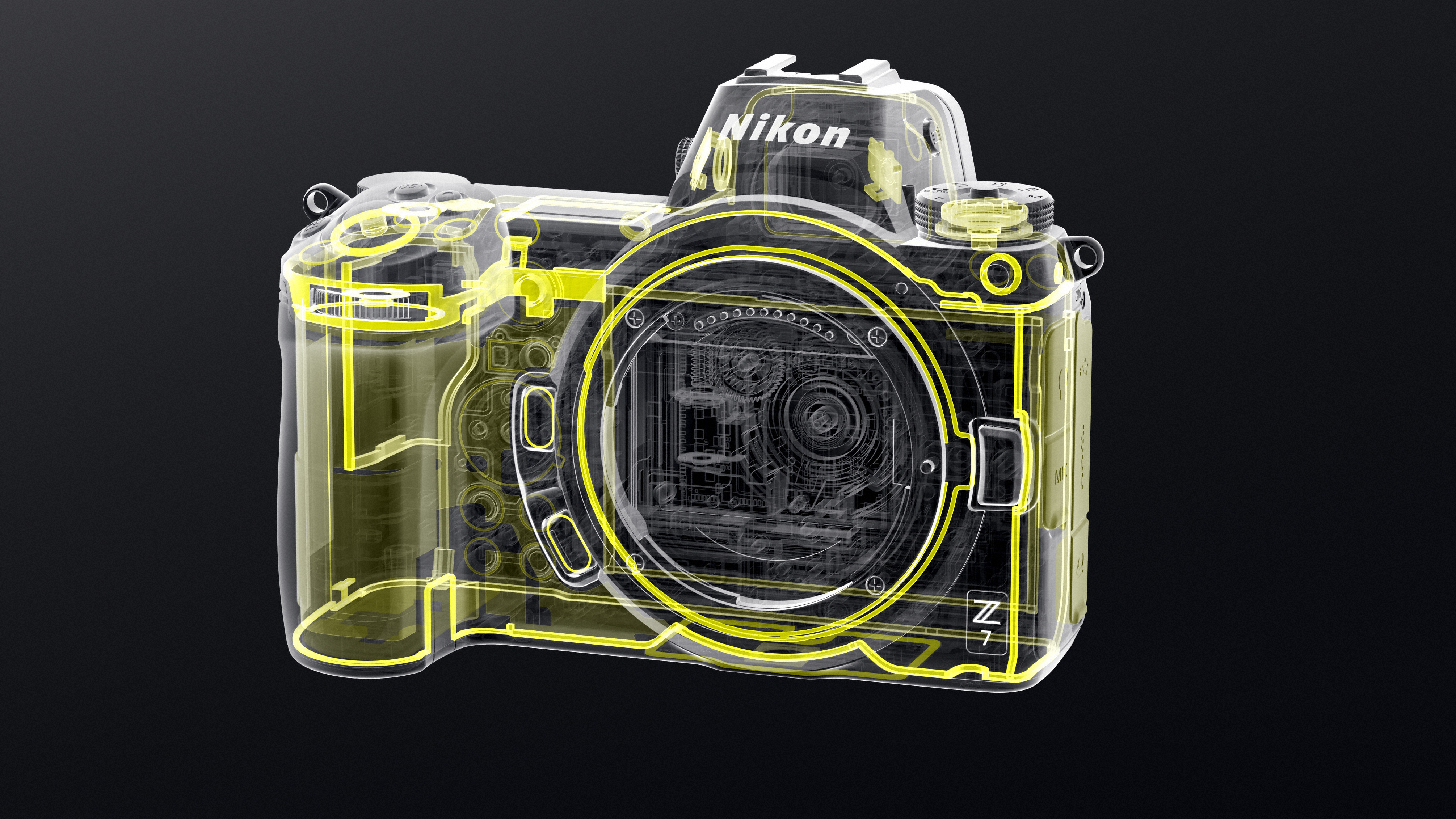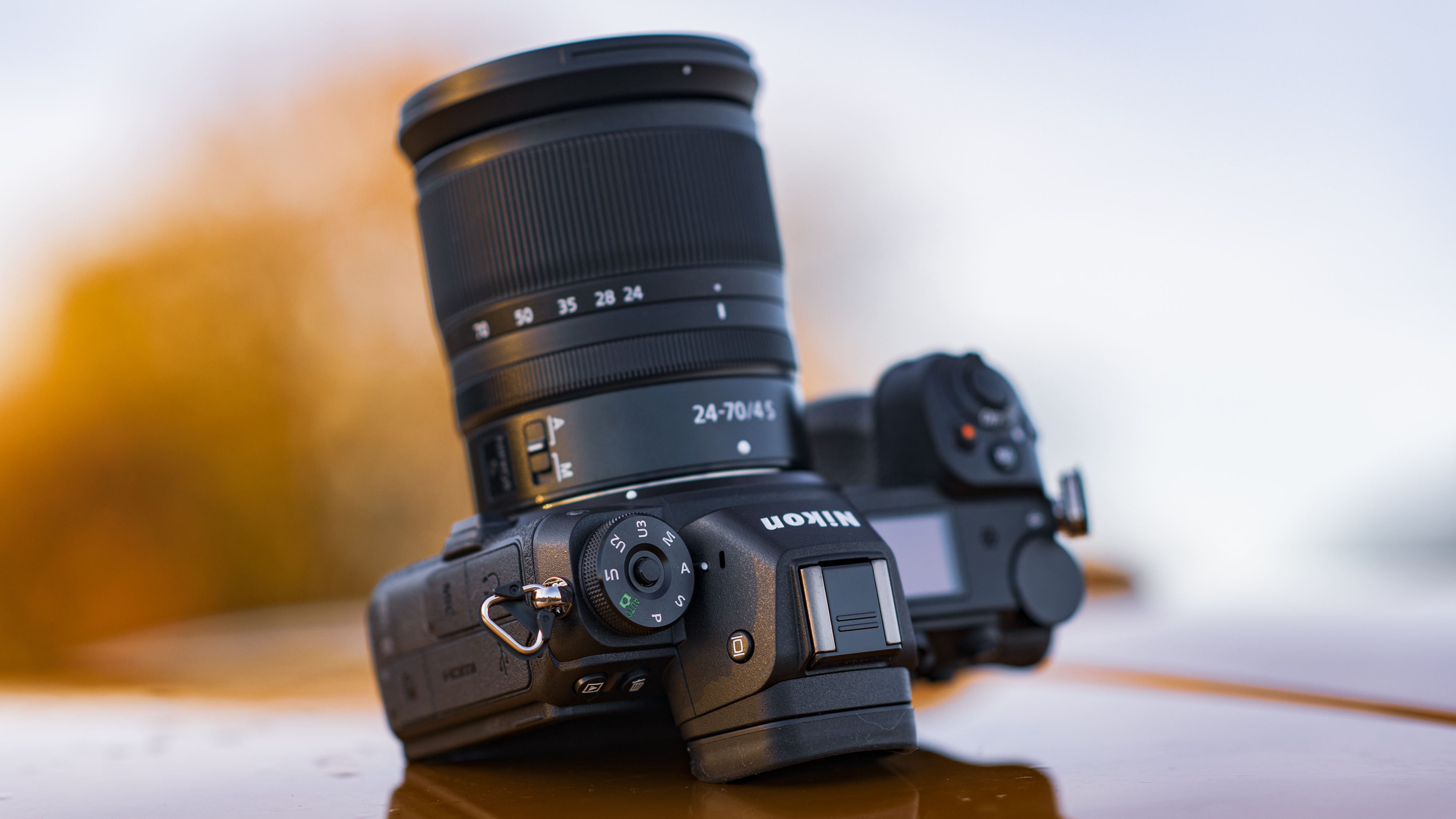Why you can trust TechRadar
Nikon Z6: build and handling
- Same level of weather sealing as the D850
- Large and comfy handgrip
- Familiar control layout
While some standout Nikon DSLRs, like the D4 and D800, have been penned by design agency Italdesign, the Z6 doesn't quite hit those heights, sporting a more functional look.
Any concerns that this might impact on the handling are dispelled as soon as you pick the Z6 up, though. The camera fits nicely in the hand, thanks to the large and comfy handgrip. As we found with the Z7, those with larger hands may find that their little finger hangs just a little off the bottom of the Z6, but it shouldn't be too much of an issue.
While the Z6 may be more compact than a Nikon DSLR, this doesn't mean Nikon has skimped on the build quality. There's plenty of quality textured rubber around the grip and backplate, and a comfortable thumb rest, while the Z6 features magnesium alloy in its top, front and back covers just like the Z7. This makes the camera feel very rigid, while Nikon also boasts that the Z6 features the same level of weather-sealing as the D850. All this combines to create a very solid and well-made camera.



For those thinking of swapping from their Nikon DSLR, the transition to the Z6 should be seamless thanks to the familiar controls and button placement.
There's the same on/off switch around the shutter-release button, while there are dedicated buttons for movie recording, ISO and exposure compensation. To adjust the ISO or dial in exposure compensation, you simply press down on the desired button and then use the rear command dial to make the change. Any adjustments will be displayed on the small LCD on the top plate.
While the control layout at the rear is slightly different to that on a Nikon DSLR, the various buttons are clearly labelled and easy to find, while the Z6 also sports the same joystick control as the D850; formally known as the sub-selector, this is weighted nicely, and offers easy control of AF area selection. The only minor disappointment here is the rather 'Coolpix'-like four-way control pad.
Nikon's philosophy of making its mirrorless cameras similar to its DSLRs in terms of handling has carried over to the Z6's user interface, with the various sub-menus running along the left-hand side of the display.
And while Nikon users will certainly feel right at home with the Z6, this accessibility is extended to those coming into Nikon's ecosystem for the first time – the Z6 is certainly a camera Nikon newbies should be easily be able to get to grips with.



Nikon Z6: autofocus
- 273-point AF system
- 90% frame coverage
- Hybrid AF system
The autofocus system is one of the key areas where the Nikon Z6 and Z7 part company. While the Z7 features a 493-point phase-detect hybrid autofocus system, the Z6 features a slightly more modest (but still impressive) 273-point phase-detect hybrid system.
Coverage is across 90% of the frame, which viewed in isolation looks to be very comprehensive, but it's slightly lacking compared with the Sony Alpha A7 III's 693-point AF system, which offers 93% coverage.
The Z6's Single AF mode features a choice of Auto-area, Wide-area (with either small or large focusing areas) and Single-point modes, or Pin-point if you want to be really precise with your focusing.
For general shooting, the Z6's Single AF (AF-S) mode does a very good job. We found that we used Single-point mode the most here, with the aforementioned joystick making it quick to move the AF point round the frame, but the Z6's Wide-area mode can also be very versatile when you're wandering around with the camera.
Focusing is very quick, only slowing a touch when light levels drop. This is when the AF assist beam springs into action to help you acquire focus, although this can be turned of if desired.
When you switch over to Continuous AF mode on the Z6 you'll find that there's now an additional Dynamic AF focusing mode that you can select
It's probably fair to say that the Z6's continuous focusing performance can't quite match the heady heights of Sony's Alpha A7 III, with its highly impressive 693-point AF system, but it's still very good.
When you switch over to Continuous AF mode on the Z6 you'll find that there's now an additional Dynamic AF focusing mode that you can select. This is primarily designed for focus tracking, and you can tailor how many additional points support the active AF point, while you can also adjust the tracking sensitivity and other focusing parameters. Additionally, you might prefer to use the Z6's Auto-area AF mode to pick and track your subject.
In our tests, focus tracking worked very well, even when tracking subjects moving towards us, and it puts in a solid performance all round.
At launch, the Z6 arrived without Eye AF, however a May 2019 firmware updated has added that missing feature, which proved to a welcome addition. To set it up, first download and install the update from Nikon's site, then set the AF-area mode to Auto-area AF. This will bring up a red corner markings of the auto-area AF itself and will be visible either through the EVF or the rear LCD.
Now, as soon as the camera detects a face, the autofocus box becomes a smaller yellow box that tracks the subject's eye, and will work in both continuous focus (AF-C) and single focus (AF-S) modes.
Already capable of locking on focus on a moving target quite well, the Eye AF in the Z6 is just as good. We're unsure whether it would be comparable to Sony's class-leading Eye AF, but the Z6 sure can hold its own.
Current page: Build, handling and AF
Prev Page Introduction and key features Next Page Performance and image qualityPhil Hall is an experienced writer and editor having worked on some of the largest photography magazines in the UK, and now edit the photography channel of TechRadar, the UK's biggest tech website and one of the largest in the world. He has also worked on numerous commercial projects, including working with manufacturers like Nikon and Fujifilm on bespoke printed and online camera guides, as well as writing technique blogs and copy for the John Lewis Technology guide.

